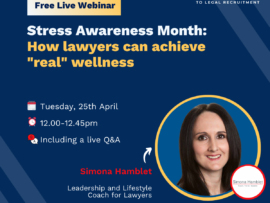11 Tips for The Everyday Art Of Successful Negotiation
0 CommentsNegotiation Skills – 11 Top Tips and Takeaways
At a recent talk, Derek Arden, negotiation specialist and author, shared his top tips for successful negotiations, in all areas of our lives.
Here are 11 Top Tips taken from the session:
- Negotiation is a skill we use 365 days a year, in our businesses and in our homes.We can use negotiation far more than we think, including in shops (Tesco probably excluded), and in our day to day lives. This includes negotiating with any children in our lives, who by the way tend to be excellent at negotiating, and getting what they want, in case you hadn’t noticed(!).
- People tend to avoid negotiating for three reasons : 1) They don’t like conflict. 2) They are afraid to ask. 3) They lack confidence.
- Negotiation sits in the middle of the circle of Presenting, Selling, Positive Energy, Pitching, Influencing, Conflict Management, and Haggling.
- It is recommended that we follow this 12 Step Process, in any negotiation, for greater success:
- Preparation and planning – This cannot be recommended enough. This includes understanding your various positions. What is your: Best Position, Target Position, Soft Walk Away Position (‘I can’t agree with that today’. Which is a ‘no’ but it allows you to mull it over and potentially make some adaptations),your Hard Walk Away Position (definite no), and your Alternative Position (if you don’t reach the outcome you want, what will you do instead?).
- First impressions – You cannot undo a first impression. Dress up so that you can dress down if needed. You can’t do the opposite. The number one factor for negotiation success, is they need to like you. People buy from, and help, people they like.
- Questions – The best negotiators ask lots of questions. Help people to get what they want, to help you get what you want. Win/Win.
- Listen – Listen for key words used i.e. ‘usually’ ‘normally’ at this price, which suggests movement is possible. Avoid getting caught up in your own thoughts, or looking at documents, spreadsheets, etc, during conversations. Listen intently and watch the other parties.
- Use your head.
- Body language – Yours and theirs. Learn how to use your tone and body language effectively (including ‘power poses’ in advance for confidence). As we know, people naturally mirror those that we like. By using these additional skills (with positive intent) we can do more to create rapport as part of our negotiations. Learn about mirroring, matching, pacing, leading, and beyond, to continue to deepen your skills. Further examples shared by Derek included understanding handshakes and how you can respond. Such as, if someone approaches you with an overturned hand, or takes your hand and then turns it over, this suggests that they tend to have a strong need to ‘win’. One option is to let them turn your hand, and then place your hand on top of theirs. However, that may not support what you want to achieve. Therefore, another option, now that you know this about them, is to go in with a higher offer. They will then feel that they have ‘won’ when negotiating you down. Win/Win. Likewise, with ‘bullying’, or ‘narcissistic behaviours’, you typically need to ensure they think any idea was theirs to succeed.
- Watch out for lying – One typical sign (nothing is 100%) is rubbing of the nose. Some individuals (apparently including some politicians) train this out of themselves.
- Strategies and tactics – Learn how to recognise these when they are being used, so to be able to react and respond more appropriately. Also learn how to use them successfully yourself. Examples include: Good person/Bad person tactics often seen. Using a ‘Higher Power’ tactic can also be helpful – i.e. I can’t get that (offer/price) passed by the boss, life partner. Use that approach to negotiate further. Pricing strategies and tactics, such as anchoring can help, or can be used to persuade you. For example, a car salesperson will have you drive the higher priced model, thereby anchoring that price in your head. Whilst driving it, they might then suggest that having now heard what you need in more detail, a lower model would suit you better. This of course now seems financially more favourable to you in comparison to the higher price in your mind. (For more on pricing strategies for your business – take a look here). Understanding negotiation tactics, isn’t about manipulating others. It is about understanding how you could be being ‘manipulated’ or ‘influenced’. How you, or both of you, could also get more from the situation with negotiation tactic awareness. By using negotiation skills, you can move towards achieving a win/win outcome. Even how adverts are created, including the colour, volume being higher, etc, is all designed for a purpose. Knowledge is key.
- Influencing – For example if you do someone a favour, or you buy the drinks/lunch etc, it creates a sensation of the other person then needing to ‘give back. or ‘owing’. (My side note – please note this may not be useful if you want to create ongoing rapport with someone in the workplace, often you want to do the opposite making them feel good for helping you].
- Managing conflict – There may be some, learn how to deal with this, react, and respond to it.
- Confidence – This comes last on the 12 step process, since developing the skills above, and ensuring proper planning, creates greater confidence.
- Notice the EGO in negotiation – let your EGO get out of the way and (genuinely) flatter theirs.
- Face to face negotiations remains the best way to get results. It often saves time in ongoing negotiations, whilst also increasing success rates, and % return, significantly. When meeting others, where possible pick a neutral venue (Derek is a fan of coffee houses). People then behave differently, particularly if other people are in the background. Avoid sitting opposite each other (win/lose position), and buy the drinks/lunch (see above).
- Emoticons can have a place in professional and modern day written conversations/negotiations. They can convey more than the written word.
- Negotiation isn’t always possible, for example Inchcape have a 36 Step Process they use, which sales executives won’t readily divert from.
- Sometimes negotiation is offering to pay more to get what you want.
- Remember:
- Everything is negotiable (almost)
- Build rapport
- The first price is not the real price
- If you don’t ask you don’t get
- Listen – seriously, and read the body language
- Psychological tactics work under the radar
11. And finally, learn from others. Read books, watch YouTube videos. Learn from the mistakes and successes of experts.
Best of luck with your future negotiations!
Simona




















































































































